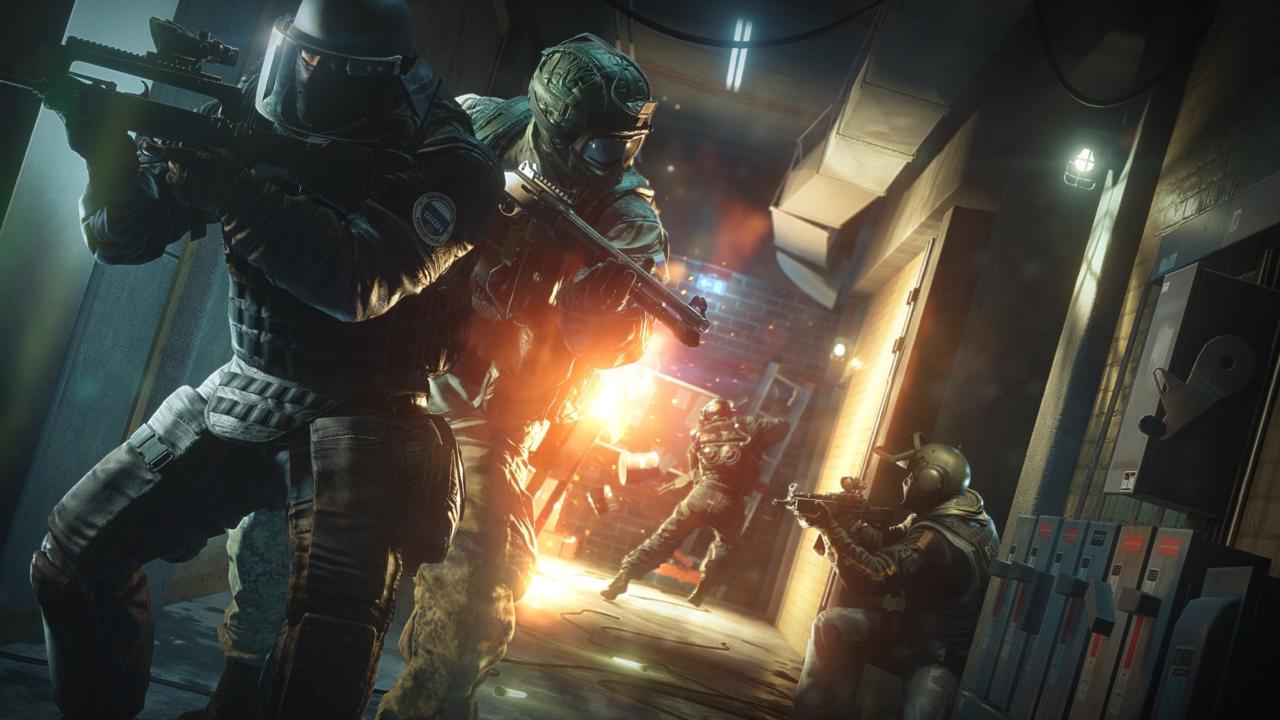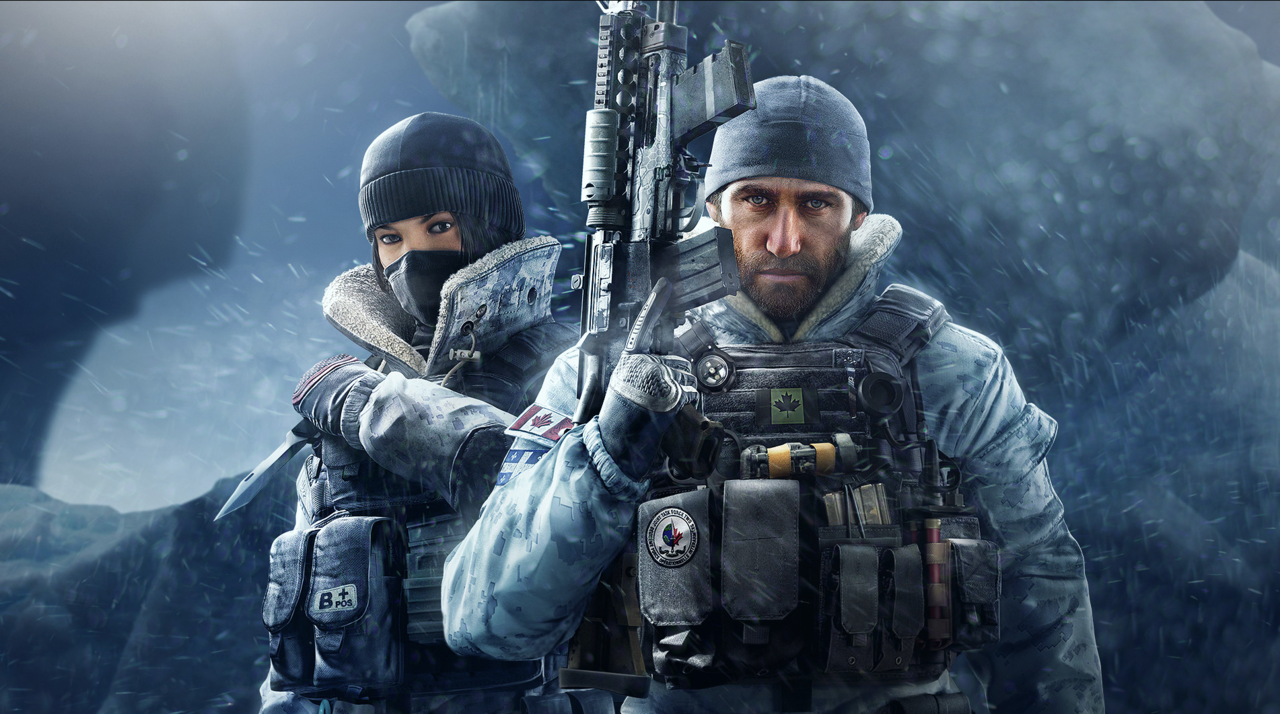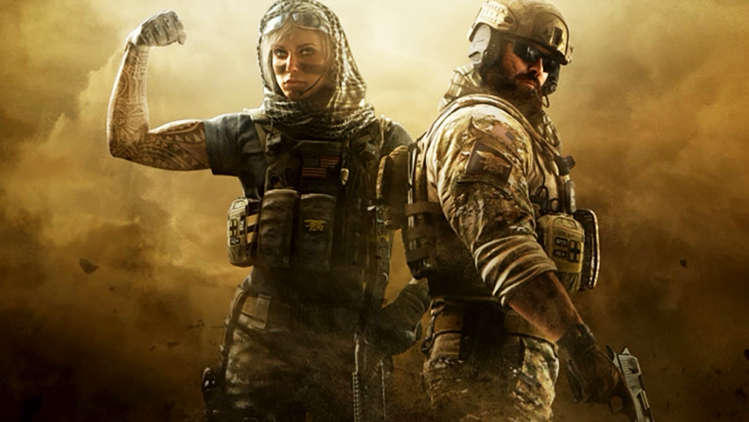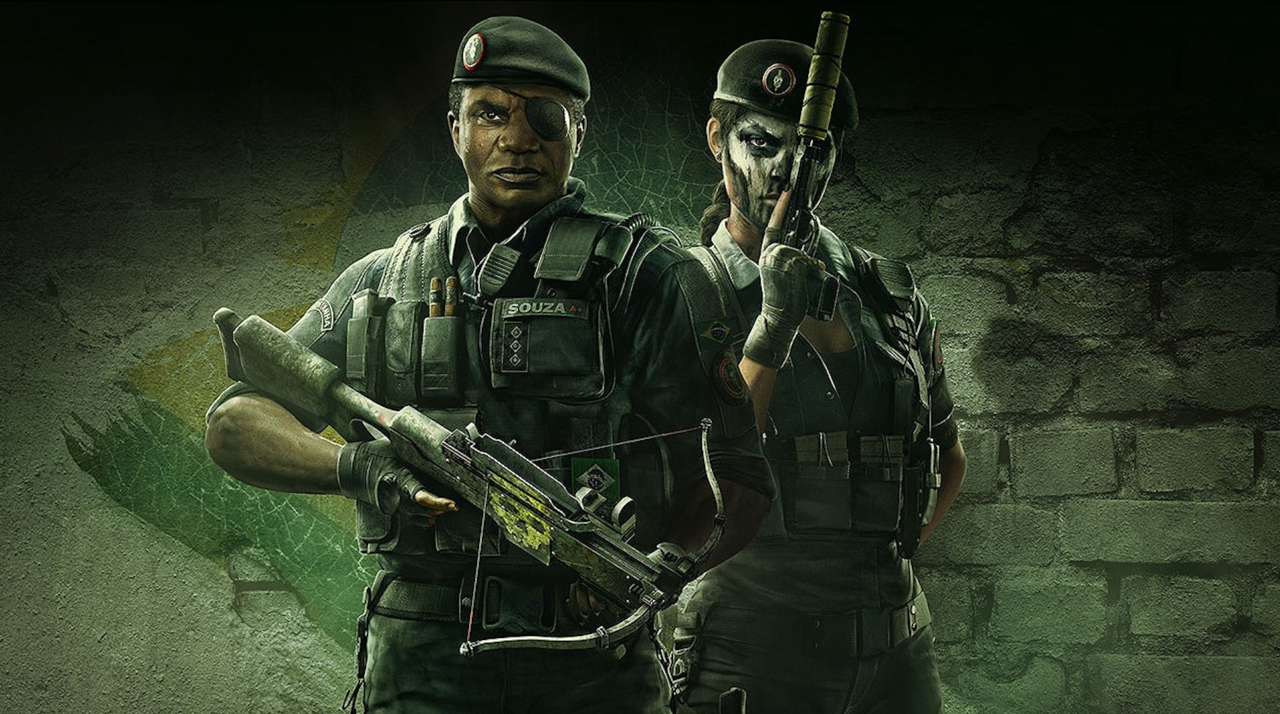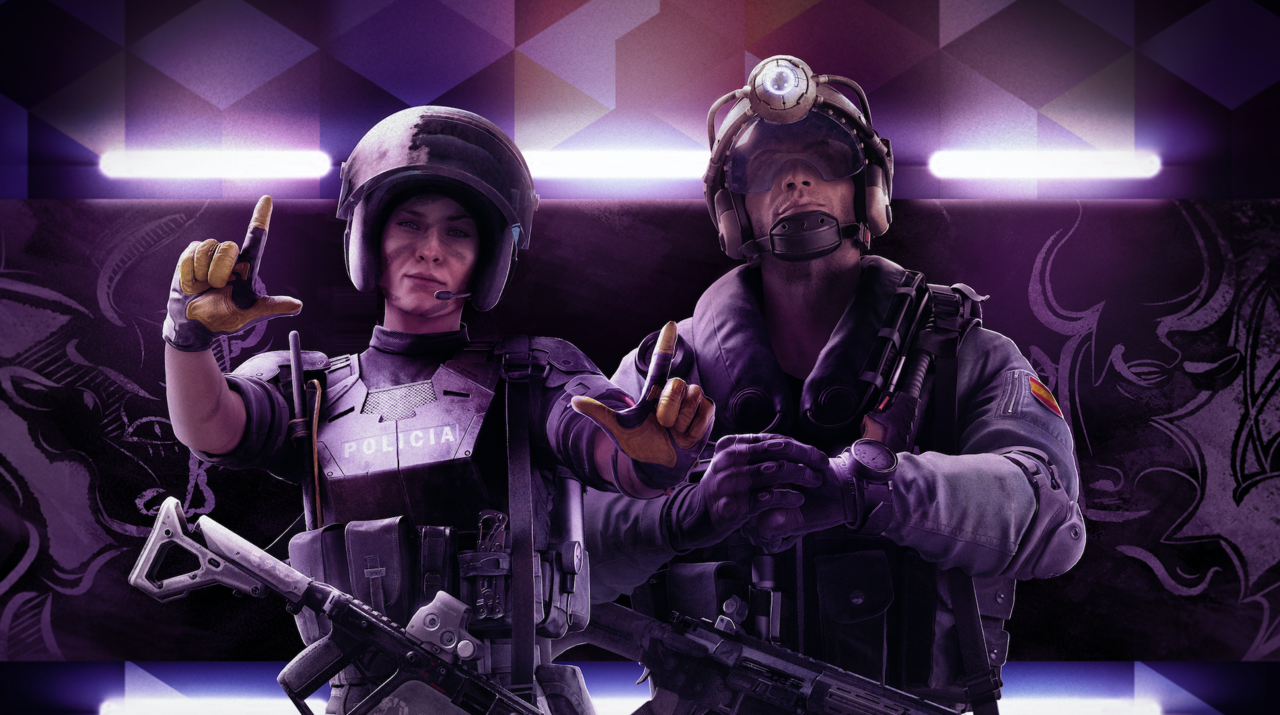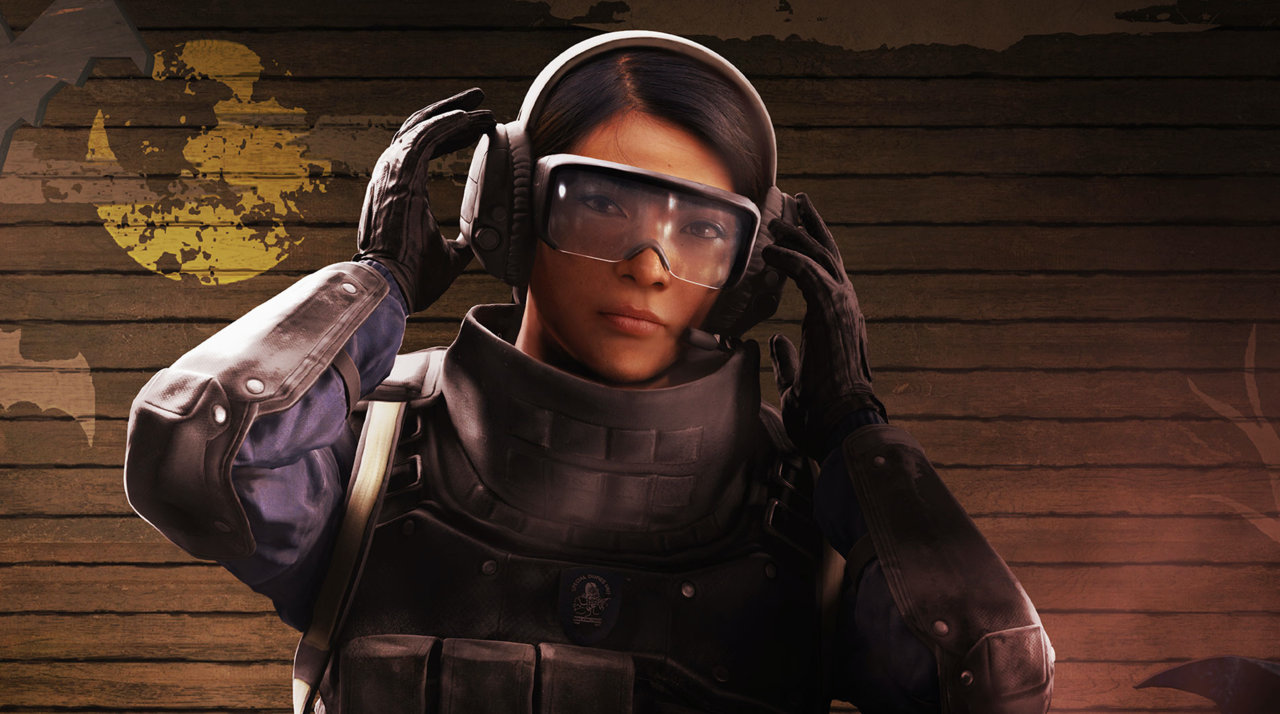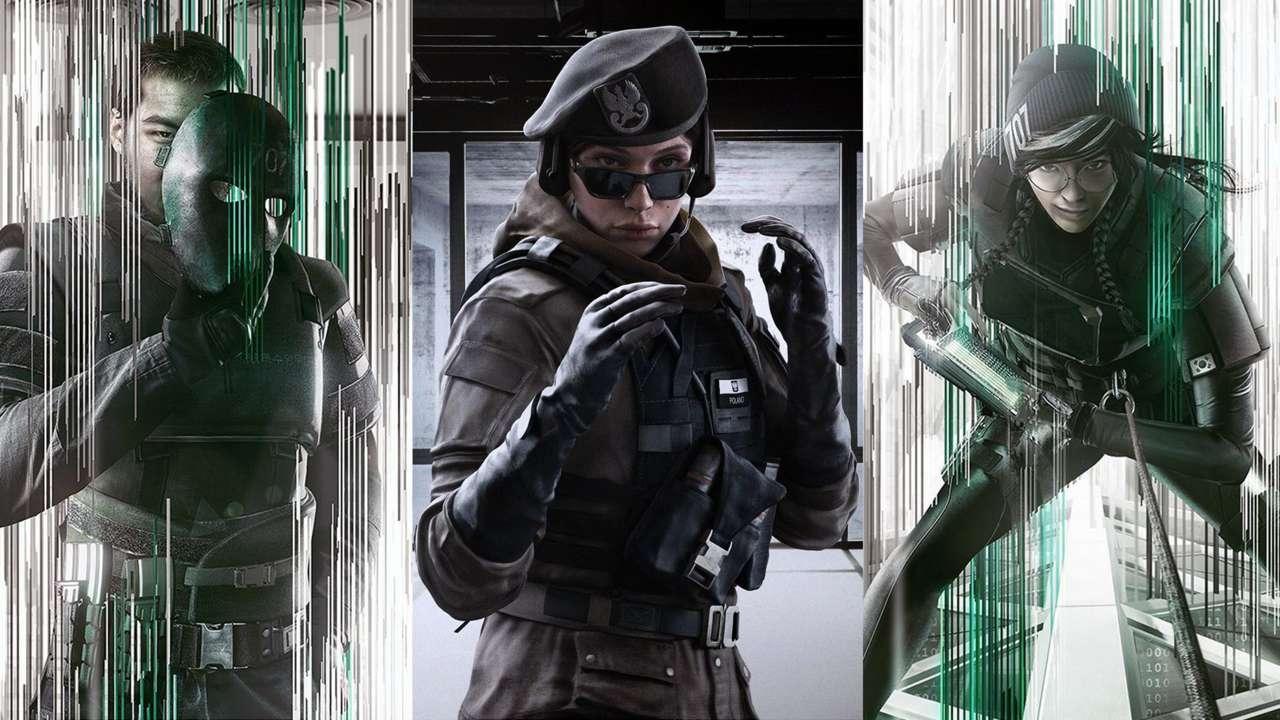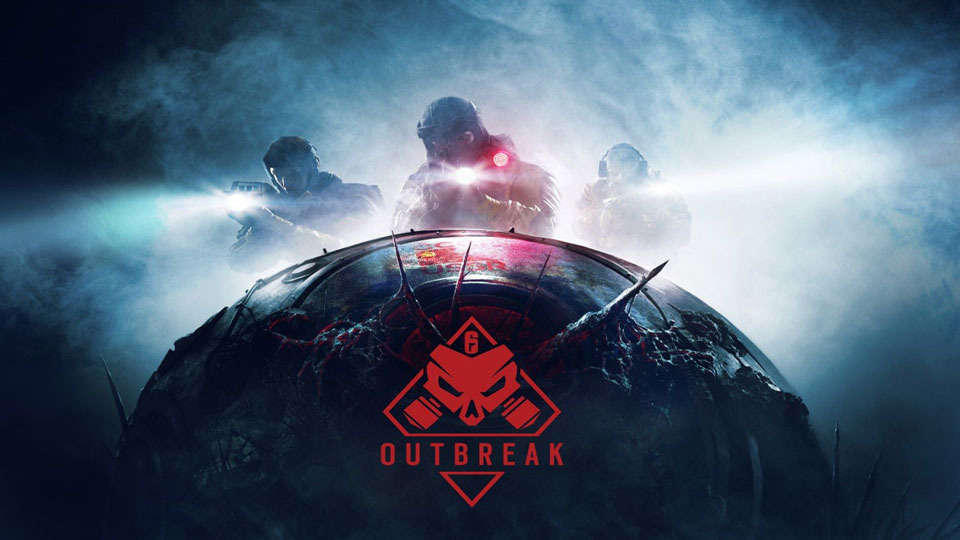Rainbow Six Siege Became Massive, Here's How
GameSpot may receive revenue from affiliate and advertising partnerships for sharing this content and from purchases through links.
Rainbow Six Siege has been around for more than two years now, and in that time, it's gone from a competent shooter that had problems to one of the biggest multiplayer games around. Following the release of the most recent expansion, Operation Chimera, Siege hit its highest-ever concurrent player count on Steam, and Ubisoft now says it wants to continue supporting the game until it reaches 100 Operators, rather than make a sequel.
But how did we get to this stage? How did Ubisoft turn an innovative-but-flawed game into the behemoth it is today? Simply put, the company did so by persevering -- with free downloadable content, an appropriate microtransaction model, and continual improvements. Just recently, for example, all of Rainbow Six Siege's base Operators were made free, while a bunch of characters were buffed or nerfed. For more on the latest expansion, check out all the Rainbow Six Siege Outbreak pack weapon skins, uniforms, and cosmetics, or read how the newest Operators, Lion and Finka, affect Siege's metagame. For now though, let's look back at what Siege was, how it's evolved, and where it stands today.
Base Game
Rainbow Six Siege's launch did not go according to plan. It was, of course, originally intended to be the ill-fated Rainbow Six: Patriots, but even after that was canceled Siege suffered problems in its beta phase and an eventual delay. It finally came out in December 2015 to a positive critical reception but also a bunch of server issues, bugs, and balancing problems.
Critics praised the game's strategic depth, cast of characters--who each come equipped with a unique ability that aids in the game's hook of 5v5, attack v defense--and its destructibility. However, players complained of slow matchmaking and inconsistent hit detection. While these problems eased in the months following Siege's launch, they did not get fully resolved for around 18 months. Some also didn't like the slow progression, as the full list of Operators is not available to standard edition players when they begin; instead, you must unlock each character using Renown (essentially experience points), which can take a while.
Year 1, Season 1: Black Ice
By the time Siege's first DLC dropped in February 2016, the game had improved enough that it had a solid playerbase that was satisfied (if not totally happy) with the game's state. Black Ice then introduced two new Canadian characters--Buck and Frost--as well as a new map named Yacht. Thankfully, all Rainbow Six Siege DLC is free: maps are available to everyone and new Operators are able to be unlocked with Renown. The latter are, however, expensive when bought using in-game currency, so it's easier for most to buy the season passes if you want swift access to all the characters.
Year 1, Season 2: Operation Dust Line
Operation Dust Line was the next batch of DLC to drop in May 2016, bringing another new map, Border, and two more American Operators, raising the then-total to 24. Blackbeard's weapon shield and Valkyrie's black eye cameras each changed the meta up and are still used in the pro leagues today.
Dust Line also marked the first time Siege players could equip special headgears and charms to their Operators and weapons, lending the game a little more color and personality.
Year 1, Season 3: Operation Skull Rain
In July 2016, Ubisoft released Siege's Brazilian expansion, Operation Skull Rain. Like previous DLCs, the update was free, consisting of two Operators--Capitao and Caveira--and one map, Favela. While Capitao and his crossbow have still not been perfected and have been the subject of many tweaks since launch, Caveira is a well-balanced, distinctive character that made Siege simultaneously more stylish and more dynamic: as a dedicated roamer, Caveira meant you could no longer expect to get all the way to the objective room without seeing an enemy defender, effectively expanding the scope of each map.
Operation Skull Rain also brought a new loadout screen to better emphasize each Operator's unique style and color.
Year 1, Season 4: Operation Red Crow
Year 1's final Season of DLC, titled Operation Red Crow and released in November 2016, was Japan-themed. The new map, Skyscraper, was set atop a Japanese tower, complete with a tea room and thin (and very destructible) shoji screens. The additional Operators, meanwhile, have experienced very different life cycles since their release. Echo and his concussion drone are rarely used and commonly considered underpowered in all but the most experienced hands, while Hibana quickly became a favorite among the community for her ranged X-Kairos pellets, which can penetrate reinforced walls in a similar way to Thermite.
By the end of Year 1, Rainbow Six Siege was in a much healthier place than 12 months earlier. It still wasn't perfect, but Ubisoft had now ironed out the majority of issues the launch game carried, while also expanding it in terms of maps and its roster of characters. Additionally, that cast grew significantly more diverse in that year, with more female characters added and ethnic minorities now represented much more prominently than before.
Finally, as an example of a number of small improvements Ubisoft has made since launch, Operation Red Crow heralded the introduction of caliber-based destruction for all weapons, meaning a hefty sniper rifle would now make a bigger hole in a wall than a single SMG bullet.
Year 2, Season 1: Operation Velvet Shell
Year 2 kicked off in February 2017 with a new season pass, another map, and another pair of Operators in Operation Velvet Shell. Originating from Spain, both new characters were excellent additions to Siege's roster: Jackal is a dedicated roamer tracker, while Mira allows the defending team to see through a reinforced wall and shoot through if needed. Both fighters, along with the new map, Coastline, are still community favorites today.
Year 2, Season 2: Operation Health
Year 2's Season 2, however, was a little different to past DLC drops. Most notably, no DLC actually dropped--or at least, no new Operators or maps. Instead, Ubisoft delayed its planned content drop in favor of a period of quality of life updates and more small improvements called Operation Health.
Aside from loot boxes called Alpha Packs, the Season meant improved textures, more realistic skies, and vastly improved lighting--you could finally see in and out of buildings! Matchmaking was also among the list of improvements, and this has remained far quicker and more reliable since Operation Health. The delay of tangible content annoyed many at the time, but in hindsight, Siege would not be as successful as it is today if it weren't for the foundation work done throughout the middle of 2016. Unfortunately, Operation Health meant we never got a fourth map during Year 2, but with so many maps that Ubisoft routinely removes some from rotation in public playlists, perhaps it's not as huge a loss as it first seems.
Year 2, Season 3: Operation Blood Orchid
The delay of two Operators in the season before meant Operation Blood Orchid came in September 2017 with not two, but three Operators, in addition to a new map. Two of those Operators, Ying and Lesion, are Chinese; the third, Ela, is Polish. Ying and Lesion are fantastic (if not revolutionary), but Ela has gone on to become a staple pick among the Siege player base. She's received multiple nerfs, but she remains a very popular defender -- primarily because of her rapid-firing SMG.
Blood Orchid's map, Theme Park, is divisive among the community, but its gaudy rides and overgrown vegetation undoubtedly add yet more flavor to the ever-expanding buffet that is Rainbow Six Siege.
Year 2, Season 4: Operation White Noise
Year 2 wrapped up in December 2017 with Operation White Noise. This season included another three Operators--the remaining Polish character, Zofia, as well as Dokkaebi and Vigil--and yet another map, Tower.
Dokkaebi was the first Operator to come from Ubisoft's recent push for 'global Operators,' by which it means characters whose abilities affect the whole map. Her hacking ability allows her to ring the phones of every defender still alive, meaning it's much easier to track them down. This mantra has continued into Year 3 with Lion and Finka, but we'll get to those momentarily.
This season also saw Rainbow Six Siege receive 60 Hz servers, as well as another of the game's big mid-season reinforcement patches that routinely address balance issues so well.
Year 3, Season 1: Operation Chimera
Siege's third year of DLC has now begun, but rather than add another map, Ubisoft has developed an entirely new mode for the now-huge shooter. Outbreak is completely different to traditional Siege, adding zombie aliens, more expansive levels, and a fully fledged PvE mode for the first time (no, Terrorist Hunt doesn't count).
There's also the usual pair of additional Operators, this time consisting of Finka and Lion. The former comes equipped with a stim pen that applies a 20 HP boost to both herself and every teammate for 20 seconds, even reviving any downed allies, wherever they are on the map. Lion, meanwhile, carries a drone that reveals moving enemies' identities and locations around the map for four seconds, including their exact outlines.
With a seemingly higher profile now than ever, Siege has also now made every weapon attachment and all 20 of its base Operators free, helping those only just jumping on board.
Looking ahead, Ubisoft has big plans for its multiplayer shooter. The publisher says it's not going to make a sequel anytime soon, instead aiming for 100 total Operators. This would mean continuing support for the current game for many more years to come, which makes a lot of sense. Siege is in its healthiest ever state, with a huge and well-balanced roster, a supportive and attentive development team, a dedicated community, and more satisfying mechanics than ever before.
In Year 3 alone, six more Operators are coming, along with a new mode, a complete map rework, and two brand-new maps. And beyond that, who knows? Rainbow Six Siege is a game that springs constant surprises and is always changing, both within matches and across seasons. Let's hope that continues throughout Year 3, and for many years after.

